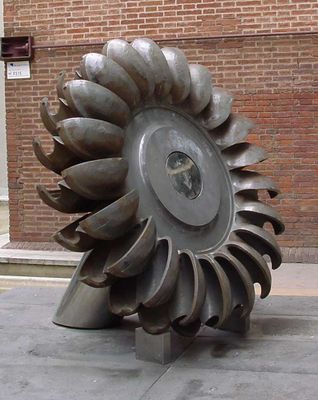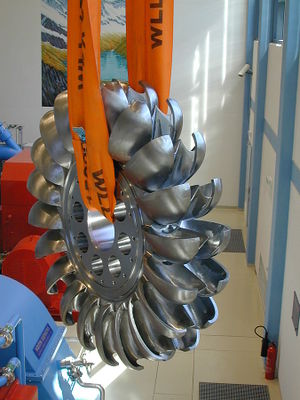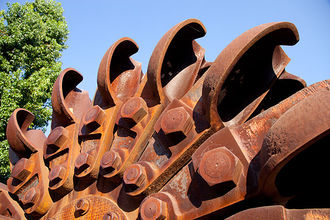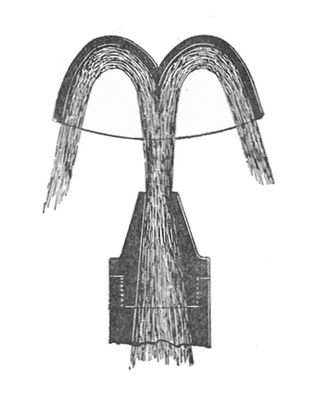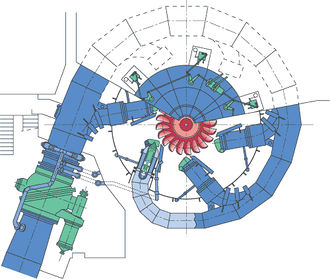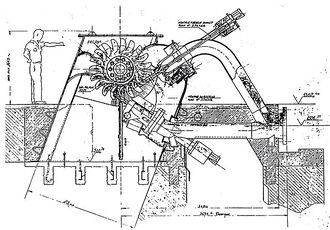Pelton Wheel: Difference between revisions
m (various minor edits, links) |
|||
| Line 17: | Line 17: | ||
==Product Ecology== | ==Product Ecology== | ||
Possibility of using | Possibility of using one or multiple [[windpump|windpumps]] to lift water up to a reservoir that acts as a "battery" of potential energy. Then a micro hydro power plant (with a Pelton turbine) can convert that stored potential energy to electricity. Does not need to be attached to a natural water flow (river, stream), can be isolated. | ||
==Links== | ==Links== | ||
Revision as of 15:55, 3 September 2016
The Pelton wheel is an impulse type water turbine: extracting energy from the impulse of moving water, as opposed to water's weight. The design extracts almost all of the impulse energy, allowing for a very efficient turbine. It was invented by Lester Allan Pelton in the 1870s.
The Pelton wheel is the most widely used water turbine in the world. It is the preferred turbine for hydro-power, when the available water source has relatively high hydraulic head at low flow rates, where the Pelton wheel geometry is most suitable. Pelton wheels are made in all sizes: the largest units can be over 400 megawatts, while the smallest ones are only a few inches across.
Gallery
Product Ecology
Possibility of using one or multiple windpumps to lift water up to a reservoir that acts as a "battery" of potential energy. Then a micro hydro power plant (with a Pelton turbine) can convert that stored potential energy to electricity. Does not need to be attached to a natural water flow (river, stream), can be isolated.
Links
- other OSE Wiki pages: Pumped Hydroelectric Storage
- Wikipedia: Pelton Wheel
- Mother Earth News (1972) "Water Power: Building a Pelton Wheel"
- "DoradoVista - Small Hydro Power Project"
- "Pelton and Turgo Turbines"
